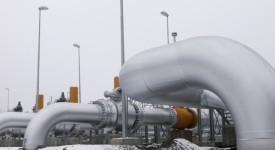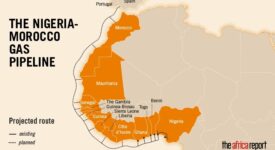The new European Commission will inherit an impasse in efforts to reform the European asylum system as well as concerns about practices in the management of the EU’s external border that contradict humanitarian standards and may even be illegal. While the number of asylum seekers who manage to reach EU territory is now lower than in previous years, it may be low precisely because of those problematic practices, including abuse of irregular migrants along the Western Balkan route, limited search and rescue capacity in the Central Mediterranean, and EU cooperation with the Libyan coast guard even though migrants returned by it to Libya have been abused.
This report explains how closer cooperation among EU member states and with countries of origin and transit can improve outcomes for all stakeholders. Crucially, short of establishing a new Iron Curtain on the EU’s external border or continuing to tolerate abuses, there is no way that either individual member states or the EU as a whole can insulate themselves from irregular migrants and asylum seekers. Yet, if crossing the EU border enabled all irregular migrants to remain in the EU for good, the integrity of EU visa and asylum policies would be undermined.
Thus, close cooperation with countries of origin for the return and readmission of their citizens who have no right to remain in the EU is crucial. Still, it is typically not in the interest of countries of origin to limit the mobility of their citizens. Cooperation between the EU and countries of origin must therefore cover a wide enough range of policies to ensure that all parties consistently benefit from the policy package and have a strong incentive to meet their commitments. We emphasize more EU support for refugees hosted by low- and middle-income countries and more legal employment opportunities for non-EU citizens in the EU.
Rethinking EU asylum and migration policies along these lines requires extensive consultations and negotiations among stakeholders in Europe and in countries of origin and transit. Our ‘insights’ are meant to inform and stimulate such conversations. However, sustainable reforms will come only as the result of stakeholders working out the details and developing a sense of ownership of the necessary reforms.
First of all, contrary to the impression created in public debates in many European countries, it is possible to garner public support for asylum and refugee policies that provide protection and assistance. To achieve this, policy makers need to think carefully about policy design (e.g., when and how to use policy limits and conditions, and how to distribute refugees across geographical areas) and about how to communicate their policy ideas and objectives to the public. The design of policy needs to take into account what we know about the likely responses from the resident population to various different policy options. The communication of public policies needs to relate to the reasons behind the increasing salience of immigration as a policy issue, including concerns about a perceived lack of state con- trol over immigration.
Thus, the new European Commission faces the key challenge of making a fresh start in its cooperation with countries of origin and transit, with a focus on listening to stakeholders and taking their interests on board. This is the first step towards negotiating self-enforcing agreements with partner country governments that lead to effective return and readmission of non-EU citizens, which remains a precondition for effective and humane management of the EU’s external border.
In sum, efforts to reform the EU asylum system have been deadlocked since 2016. The new Commission can start afresh by adopting a new approach to asylum and migration policy that emphasizes the common interest of EU member states in managing the EU’s external border effectively and humanely and helping to protect refugees world-wide as signatory states of the 1951 Refugee Convention. At the same time, this approach would allow member states to contribute to the common tasks in line with their capacities: Finan- cial contributions would go through the EU budget and member state shares would be the same as for the overall budget. More flexibility would be allowed particularly in the hosting of asylum seekers, recognized refugees, or refugees resettled by UNHCR.
The proposed monitoring mechanism would encourage transparency and constructive debate among member states on how responsibility for implementing EU asylum and migration policies should be shared fairly; how member states should contribute to closer cooperation with countries of origin and transit, including by expanding opportunities for legal labor migration; and how member states should contribute to refugee protection worldwide through humanitarian and development cooperation and by hosting refugees resettled by UNHCR. Well-designed and carefully coordinated actions are required in these diverse policy fields to overcome the current deficiencies in the management of the EU’s external border and build the capacity of the EU asylum system, both at the EU and member state levels, so that the EU can respond adequately to future refugee situations as they may arise.
‚Rethinking EU Migration and Asylum Policies: Managing Immigration Jointly With Countries of Origin and Transit‘ – Report by Mikkel Barslund, Andreas Backhaus and Mattia Di Salvo – Centre for European Policy Studies / CEPS.
The Report can be downloaded here







